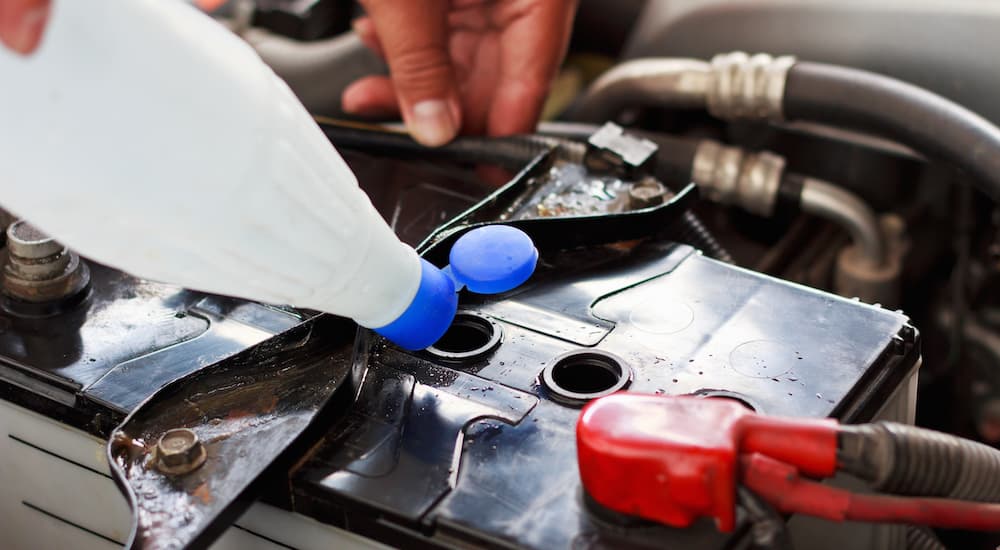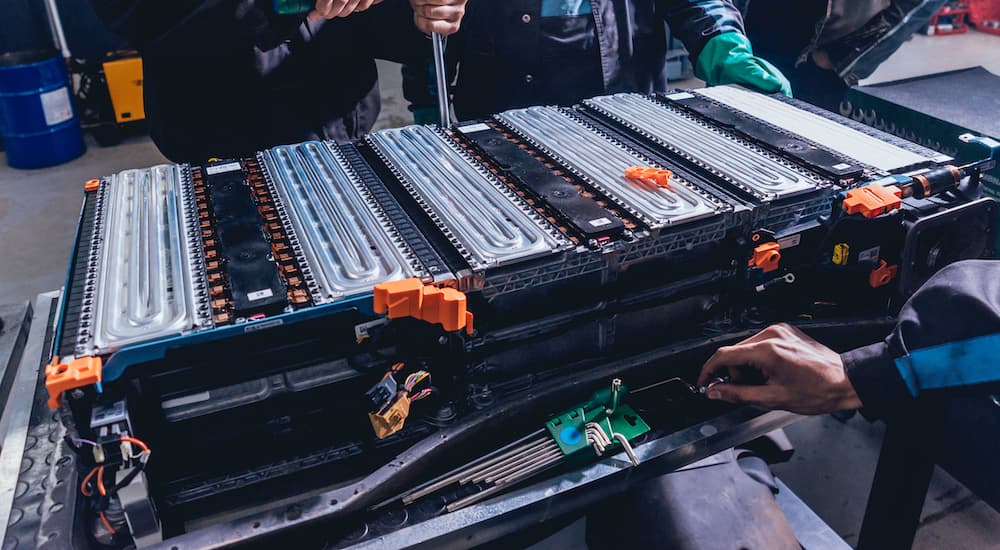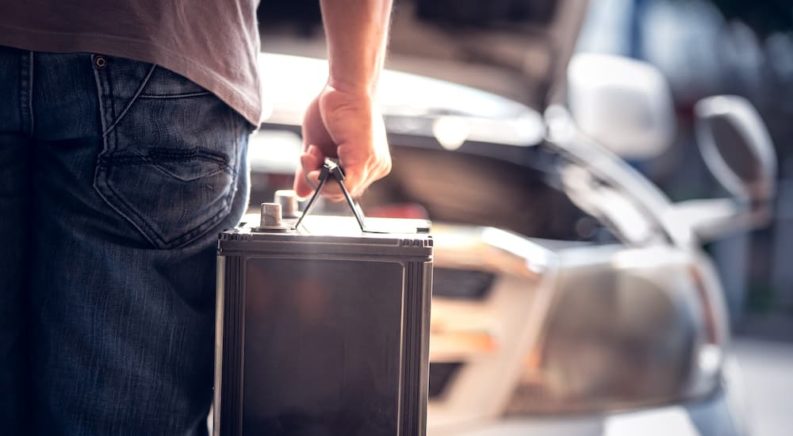We’ve all had it happen to us. We get behind the wheel of our car, push the ignition button, and then nothing happens. This is what happens when good batteries go bad. You may think you need to bring your car in for auto service, but what you should look into is upgrading your car battery.
Back when I was a kid, the car battery had a really simple function, and that was to get the starter motor to turn over. Once you had your car running, you could actually remove the battery since all of the electrical functions like the headlights and AM/FM car radio were being powered by the alternator. This would be used to also recharge the car battery while you were out driving.
However, today’s cars are more complicated with so many more electrical functions. Most modern vehicles have computerized systems to control the HVAC system, infotainment features, and driver assistance safety systems. All of this draws more energy than the old days when it was cool to have a plug-in cigarette lighter in your dashboard. This is especially the case if you own a pickup and plan to use it on job sites. Luckily, battery technology has kept pace, which gives you an advantage if you choose to get a car battery upgrade.
Different Types of Car Batteries
Just like cars themselves, not all car batteries are the same. In addition to different battery sizes and power levels, there are actually several different types of car batteries. These are basically differentiated by the chemicals and designs used in their manufacture.

Wet Batteries
The most common type of car battery is the flooded lead-acid battery. These are also colloquially known as wet cell batteries. This is because drivers used to have to add water to them from time to time to maintain the electrolyte solution that produced the electricity. Fortunately, today’s batteries are usually maintenance-free and sealed, so you don’t have to worry about keeping them topped off. However, while these can be the least expensive batteries, they also have shorter lives. As a result, they are good as car starters but really don’t provide the energy you are going to need for all of today’s gadgets.
Gel Cell Batteries
Dry cell batteries were developed as an advancement over flooded lead-acid batteries. These are more commonly known as gel cell batteries because the use of silica in the solution made it less of a liquid, sort of like a gelatin. Nevertheless, while these provide longer life cycles than the other battery types and cannot spill, it was only a temporary solution. Gel cell batteries are relatively fragile, and high amperage can damage them. These are harder to find since they don’t provide enough difference over sealed wet cell batteries to justify the extra expense.
AGM batteries
One battery that has become more popular in recent years is the absorbent glass mat battery (AGM). This uses a fiberglass separator that absorbs the electrolyte solution inside the battery, helping to keep it in place. It provides better performance than wet cell or gel cell batteries, but this performance comes at a cost. An AGM battery can run you almost double what you will pay for the other types of batteries. Even so, an AGM battery will generally last considerably longer, making the overall lifetime cost more reasonable. AGM batteries can also charge faster and discharge more energy, making them a good pick for hybrids and cars with automatic start/stop systems.
Deep Cycle Batteries
Deep cycle batteries were originally designed for heavy use over a long period of time on boats and recreational vehicles, which is probably why they are also known as marine batteries. These use thicker battery plates, making them denser and heavier than other battery types. While a deep cycle battery can be quite costly, it is a good option if you are looking for something that can handle heavy accessory use. For example, if you plan on parking somewhere and accessing your infotainment system without the engine running, then a deep cycle battery would be ideal. You don’t want to end up like my Dad and me when we decided to listen to the car radio while waiting for my brother to get out of class one day. I’ll just say that the guy from the service station didn’t charge too much to jumpstart my Dad’s car.
Lithium-Ion Batteries
The last battery type is mostly associated with EVs and hybrids. Most automakers use lithium-ion battery packs for these types of vehicles, as they are relatively light, can store far more energy than conventional batteries, and can charge in a fraction of the time. In addition, many of them can last up to 20 years, making them a very economical choice. However, we are starting to see aftermarket 12V lithium-ion batteries for traditional gasoline cars. The high price of these batteries means that they are generally only used by sports car enthusiasts looking to trim weight, but if you have the money, a lithium-ion starter battery can be a serious upgrade for your daily driver.

Cold Cranking Amps and Size Matter
Just like when you put a new set of tires on your car, you need to make sure you are putting the right size battery with the correct cold-cranking amps (CCA) into your vehicle when you are doing an upgrade. A battery of the wrong size will not fit properly in the car, potentially coming loose and causing damage. A battery that cannot generate enough CCA runs the risk of not being strong enough to start your car––particularly when temperatures fall. That is why you should only use batteries with the right size and CCA rating as specified by your vehicle’s manufacturer.
Replacing Your Battery for an Upgrade
If you decide you want to upgrade your battery, you’ll need to determine if you want improved performance from an AGM battery, plan to use plenty of electrical devices on your vehicle necessitating the constant charge from a deep cycle battery, or want to lighten the load and get longer life from a lithium-ion battery. This will all depend on what you are looking to get out of your vehicle. If you are just replacing a malfunctioning starter battery and want to save some money, then it may pay to just stick with a simple lead-acid battery.
If you are mechanically adept, you can replace the battery yourself, or you can take it to an auto service center to do the job. You do have to take precautions to avoid a shock, as car batteries carry a charge even when they are disconnected from your vehicle. In addition, many of the conventional batteries contain corrosive acids. If there is a leak from your existing battery, then you should strongly consider having it removed by a trained technician. Finally, you need to arrange to have your battery disposed of properly as there are environmental concerns. You can’t just leave it out in front of your house with the morning trash. This is where going to an auto service center will help as they will be able to properly dispose of or recycle your old battery.
Getting the Right Battery
There is no right answer when it comes to replacing and upgrading your car’s battery, except for size and CCA. You will need to determine what type of usage you need from your vehicle’s battery, as well as how much you have in your budget for your next battery. Once you have done this, you’ll be ready to upgrade.

